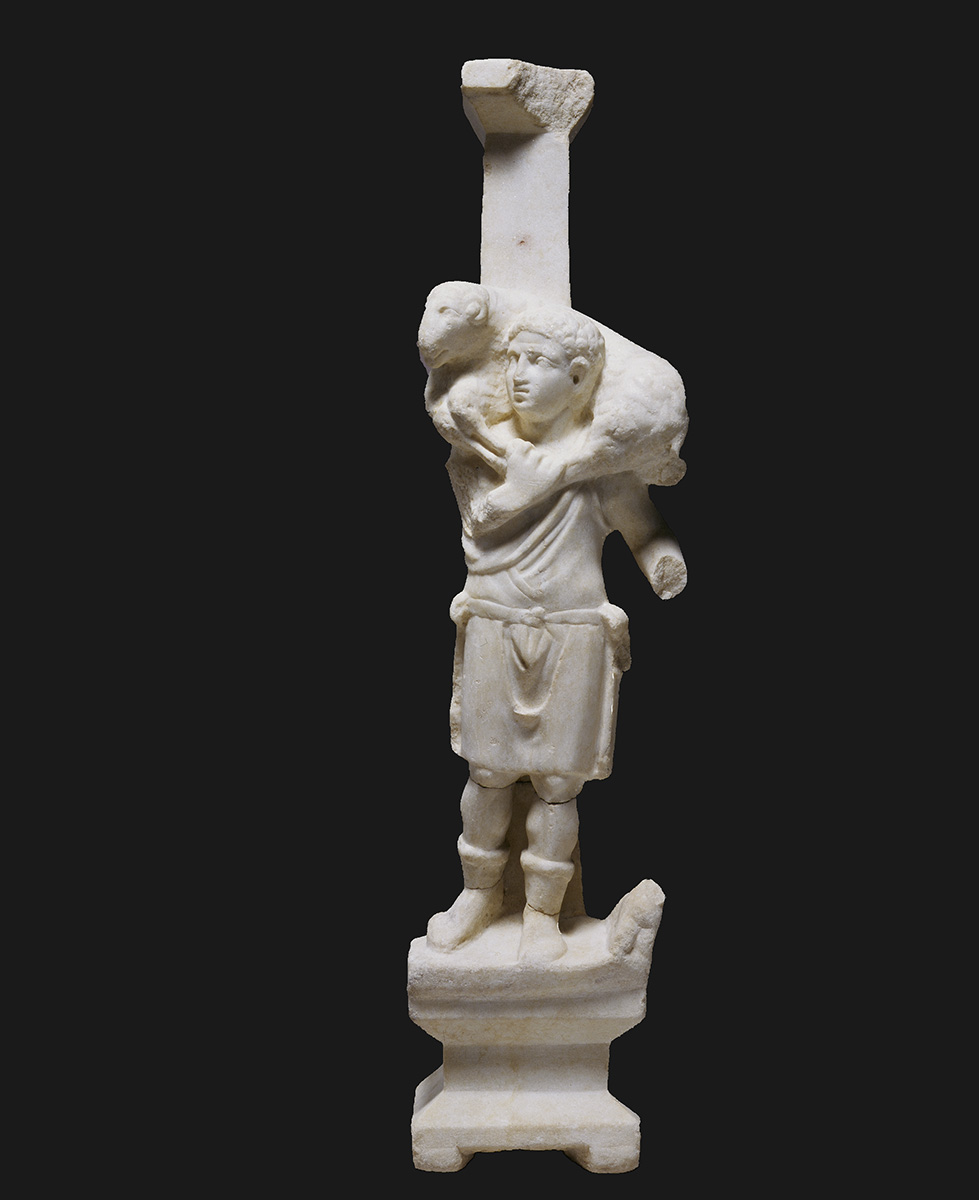
Table support with the Good Shepherd
A table support from a luxurious table, made from a single piece of marble. It consists of a cubic base with four small rectangular legs with the help of which it stands on the ground and a base in the shape of a pedestal. The main face of the pedestral is decorated with a high relief of the iconographic type known as “The Good Shepherd”, a young herder with a ram over his shoulders. The exceptionally high-quality shepherd is depicted standing frontally. He is wearing a short sleeveless tunic, fastened at the waist, and boots. His head, with its short, curly hair and expressive eyes, is turned slightly to the right. He is holding the legs of the ram with his right hand and has a shepherd’s crook, unfortunately broken, in his left hand. A dog sits to the left of the shepherd’s feet. The rectangular marble plaque, known as the abacus, has not survived. It was supported with the help of the shallow circular groove at the top of the leg. The table was placed against a wall with the decorated side facing the viewer. The leg was found fallen and broken into five parts in the entrance to a monumental tomb complex dating from 350-400.
This piece of furniture was probably used by the relatives of the dead to place utensils and food on during funeral ceremonies. Similar marble tables of the “Good Shepherd” type were made during the 3rd and 4th centuries in workshops in Asia Minor. They were distributed throughout the Mediterranean and used in private and public spaces. This is the third marble table leg of the ‘Good Shepherd’ type that has been found in Thessaloniki, and the only one found in a cemetery with pagan and Christian burials. The figure of the young ‘ram-bearer’ is a widespread iconographic theme originating in ancient times with the well-known Hermes Kriophoros [krios = ram]. It later evolved in art into an allusion to a bucolic and peaceful life, for both pagans and Christians. Apparently, during 3rd and 4th centuries, the “Good Shepherd” acquired a new symbolism, as it symbolizes Christ, the leader and the saviour of the souls, according to the New Testament and the parable of the lost lamb. The same symbolism is attested in the burial monuments.
Code
AG 2491
Type
Table support (trapezophoros)
Chronology
Middle of 4th c.
Dimensions
Height 95,5 cm., height of the figure: 57,5 cm. Base dimension: height 17,5 cm., length 19 cm., width 17 cm.
Material of Construction
Marble
Origin
Thessaloniki, west cemetery



